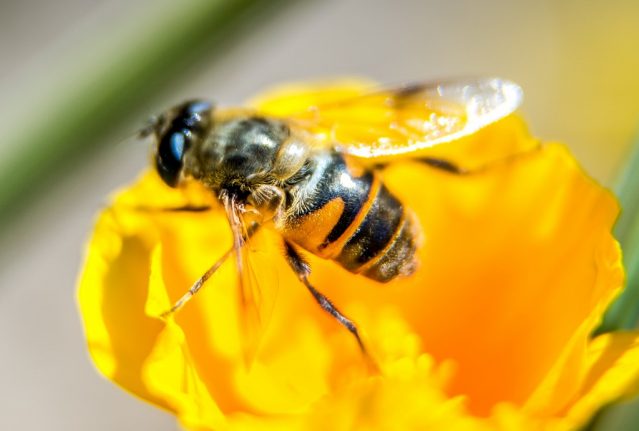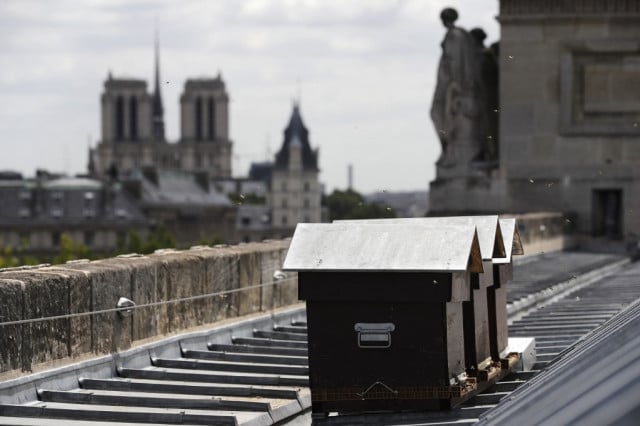Honey producers in the town of Ribeauvillé had noticed their bees carrying blue, green and brown-coloured materials back to the hives since the beginning of August. Soon after honey of the same blue and green colours came from their hives.
The local union of beekeepers started an investigation of the problem after about 12 producers in the area reported the same problem.
After three weeks they were lead to a biogas plant 4km away, who had discovered a bee hive above a vat containing a product exactly the same colour as the honey produced.
A letter from the head of the Agrivalor biogas plant, Philippe Meinrad, to the mayor of Ribeauvillé sent in April this year eventually revealed the plant had been processing waste materials from a nearby Mars factory making M&Ms.
Agrivalor says it is not making efforts to clean its site in order to prevent a similar incident happening again.
"We discovered the problem at the same time they did. We quickly put in place a procedure to stop it," Meinrad told newsagency Reuters.
As of yet, Mars have made no comment.
While the beekeepers may have got to the bottom of the mysterious colour of their honey, the unsellable produce comes after a year of problems – after a harsh winter they encountered a high bee mortality rate, and pesticides had been affecting their hives.
Head of the beekeepers’ union, Alain Frieh said in an interview with Reuters: “For me, it's not honey. It's not sellable.”


 Photo: AFP
Photo: AFP Please whitelist us to continue reading.
Please whitelist us to continue reading.
Member comments